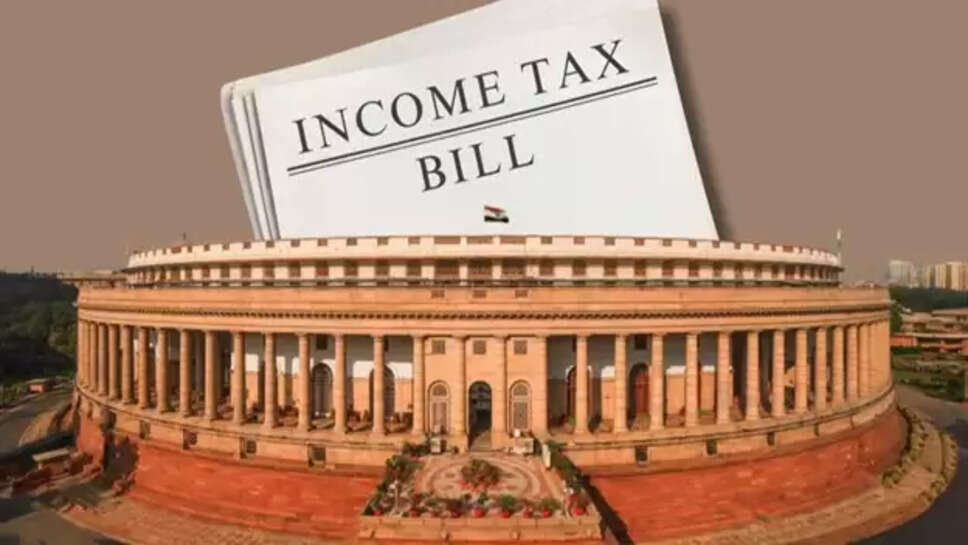CBDT Chief: New IT Law Will Be Backed by Digital Search and Seizure Manual

As India prepares for a comprehensive overhaul of its income tax framework, the Central Board of Direct Taxes (CBDT) is set to introduce a detailed operational manual to guide digital searches and seizures under the provisions of the new Income Tax Bill. The upcoming manual, according to CBDT Chairman Ravi Agrawal, will serve as a standardized reference document for tax officers dealing with digital evidence, ensuring consistency, legal clarity, and accountability in the investigative process.
This move reflects the government’s increasing reliance on technology-driven enforcement and acknowledges the complex landscape of modern financial crimes, which are often concealed behind digital devices, encrypted data, cloud servers, and virtual assets.
Why a Digital Manual Now?
The new Income Tax Bill, currently under consultation and expected to replace the decades-old Income Tax Act of 1961, proposes a more modern, simplified, and technology-friendly tax code. In line with this vision, the CBDT has recognized the growing relevance of digital data in uncovering tax evasion, illicit financial flows, and shell entities.
While traditional searches involved physical raids, document scanning, and cash seizures, today’s investigations demand forensic expertise in seizing laptops, phones, hard drives, and cloud-based records. However, the legal and procedural framework governing these digital interventions has so far remained fragmented and ambiguous, often leading to disputes in courts and allegations of overreach.
By preparing a manual, the CBDT seeks to institutionalize procedures around how officers should identify, access, preserve, clone, decrypt, and present digital evidence during search and seizure operations.
Key Elements of the Proposed Manual
According to officials familiar with the early drafts, the manual is likely to include:
-
Protocols for imaging and cloning of digital devices
-
Guidelines for accessing encrypted data or password-protected files
-
Time-bound procedures for returning devices or data not relevant to the case
-
Chain-of-custody rules to preserve evidentiary integrity
-
Coordination frameworks with cybersecurity and forensic experts
-
Legal safeguards to protect taxpayer privacy and data rights
-
Rules for handling cloud-stored documents, emails, and backups
The manual may also specify standard forms and logs, to be filled out during operations, ensuring transparency and preventing arbitrary or excessive action.
Bringing Uniformity to Enforcement
CBDT Chairman Ravi Agrawal emphasized that the manual’s goal is to provide uniformity across field formations. "Different officers have adopted different interpretations and practices when it comes to seizing digital data. This often leads to inconsistencies, disputes, or even suppression of evidence. A common protocol will eliminate such grey areas," he stated in a recent interaction.
The move is expected to be welcomed not only by tax officers seeking clarity but also by legal and corporate circles that have long demanded a codified digital search process to reduce harassment and avoid misuse of power.
Technology’s Growing Role in Tax Probes
In recent years, the Income Tax Department has significantly increased its use of data analytics, AI, machine learning, and AI-driven risk assessment engines to identify mismatches between disclosed income and actual lifestyle, digital transactions, or asset ownership.
With increasing volumes of digital footprints—ranging from e-invoices, social media data, investment apps, and cross-border transactions—tax officers are required to capture and assess digital ecosystems, not just traditional documents.
However, the process of capturing that data from suspects has been murky. In many cases, individuals have alleged that officers seized phones without passwords, delayed returning devices, or accessed private files not relevant to the case. The new manual aims to strike a delicate balance between investigative necessity and privacy rights.
Challenges in Handling Digital Evidence
Handling digital evidence is significantly more complex than physical records. For instance:
-
Data can be deleted remotely or destroyed with self-destructing apps.
-
Devices may contain both personal and financial content, raising privacy and constitutional concerns.
-
Evidence may be stored outside Indian jurisdiction (e.g., cloud servers in the U.S. or Europe).
-
Metadata manipulation can raise questions about authenticity and chain of custody.
The manual is likely to prescribe digital forensics best practices such as creating verified clones, using write blockers, and maintaining proper documentation for every step of device handling.
Legal and Constitutional Implications
India’s legal framework under Article 20(3) of the Constitution protects individuals from self-incrimination. Courts have also recognized that phones and digital devices are extensions of private life, and blanket seizures or indiscriminate data searches could violate fundamental rights.
By introducing a manual, the CBDT hopes to preempt legal challenges and demonstrate that searches are conducted within a lawful, documented, and accountable framework.
Experts believe that courts will give greater evidentiary weight to digital records seized under such a standardized process, while taxpayers will gain confidence that the search process will be fair, time-bound, and challengeable if procedural lapses occur.
Consultations and Feedback
Before finalizing the manual, the CBDT is reportedly consulting digital forensic experts, law enforcement agencies, IT professionals, and legal scholars. It is also engaging with field officers who have handled complex digital searches, to incorporate real-world insights.
Industry associations, legal bodies, and taxpayer advocacy groups are also being invited to suggest safeguards and clarity on ambiguous scenarios—such as handling work-from-home laptops, personal cloud accounts, or shared devices.
Impact on Taxpayers and Professionals
For businesses and professionals, the manual could offer much-needed clarity on what to expect during a search:
-
What data officers can legally ask for
-
How to respond to digital search orders
-
What rights individuals have during seizures
-
How long devices can be kept
-
How to appeal against improper data collection
Tax professionals also hope the manual will help avoid reputational damage and operational disruption by ensuring devices are cloned on the spot and returned swiftly, rather than confiscated for months.
Global Parallels
Many countries, including the U.S., U.K., and Australia, have already codified search and seizure procedures for digital evidence, especially after increasing cases of cyber fraud, offshore tax evasion, and dark web financial dealings.
India’s move toward formalizing such practices aligns with global trends and may also enhance mutual legal assistance between jurisdictions where cross-border digital evidence is critical.
Looking Ahead
The digital search and seizure manual marks a critical step in modernizing India’s tax enforcement machinery. In an age where financial trails are embedded in gigabytes of encrypted data and digital wallets, tax authorities need not just access—but legitimacy and accountability—in how they extract that data.
By building a transparent, detailed, and rights-based framework, the CBDT hopes to send a strong message: India’s tax system can be both tough and fair—digital, but democratic.
